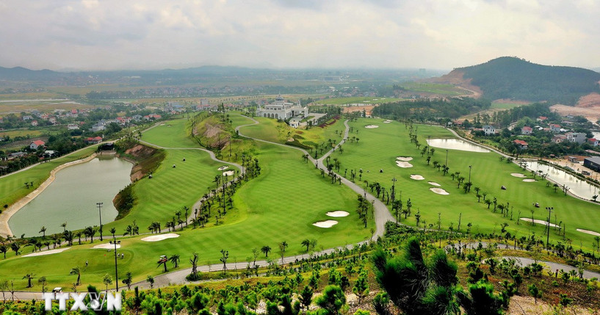Golf tourism is emerging as a bright spot in Vietnam’s tourism industry, with revenue expected to rise from $600 million in 2022 to $1 billion by 2025, around 8-10% of the national total.
Vietnam, known as “Asia’s golf paradise,” offers diverse landscapes, a long coastline, and a tropical climate ideal for golf. Its 80-plus 18-hole courses range from seaside fairways to mountain layouts. Renowned sites such as The Bluffs Grand Ho Tram Strip, Laguna Lang Co, Hoiana Shores, and Ba Na Hills Golf Club attract millions of golfers annually, elevating Vietnam’s reputation worldwide.
Golf tourism is among the fastest-growing segments, with visitors spending six times more than average tourists.
Beyond revenue, it enhances Vietnam’s image as a premium and sustainable destination. The country has won “Asia’s Best Golf Destination” for eight straight years (2017–2024) and twice “World’s Best Golf Destination.” Hanoi was named “World’s Best Golf City Destination” in 2023 and 2024.
Nguyen Trung Khanh, Director of the Vietnam National Authority of Tourism (VNAT), said these honors highlight Vietnam’s capacity to host world-class tournaments and meet the demands of discerning travelers. Golf tourism now anchors a premium ecosystem of courses, hotels, resorts, cuisine, and services, with key markets in the Republic of Korea, Japan, the U.S., Europe, and the Middle East, he stated.
In July, the Ministry of Culture, Sports and Tourism appointed golf legend Greg Norman as Vietnam’s Tourism Ambassador for the 2025–2030 tenure. Deputy Minister Ho An Phong said Norman’s influence will boost Vietnam’s image globally. He will join major international promotions to attract high-end visitors, he added.
Local initiatives are expanding golf tourism. Hanoi, within 60 km of more than 10 international courses, combines golf with luxury resorts, gastronomy, and cultural tours such as “golfing, Old Quarter exploration, street food, and spa.”
Recently, Korean investors have proposed two golf resort projects, with 550 hectares in area and an investment of $60 million.
In Dak Lak, authorities are reviewing a golf and villa project at Ea Kao Lake (110 hectares) to link premium leisure with urban development.
However, VNAT Vice Director Ha Van Sieu noted golf tourism still lacks integration with culture, mainstream tours, MICE, and long-stay packages.
Experts emphasized the importance of stronger connections between golf operators and travel agencies to create a professional ecosystem. Forming alliances among golf enterprises can help build local brands, develop integrated services, and host more international tournaments. Additionally, offering specialized packages such as golf and spa, or golf, culture, and craft village experiences will broaden the appeal of golf tourism.
Vietnam’s national tourism strategy to 2030 identifies golf tourism as a priority to enhance competitiveness. With natural advantages, growing infrastructure, and cross-sector cooperation, Vietnam is poised for a breakthrough. Long-term success, however, depends on diversified products and top-tier experiences that secure Vietnam’s place on the global golf map.







